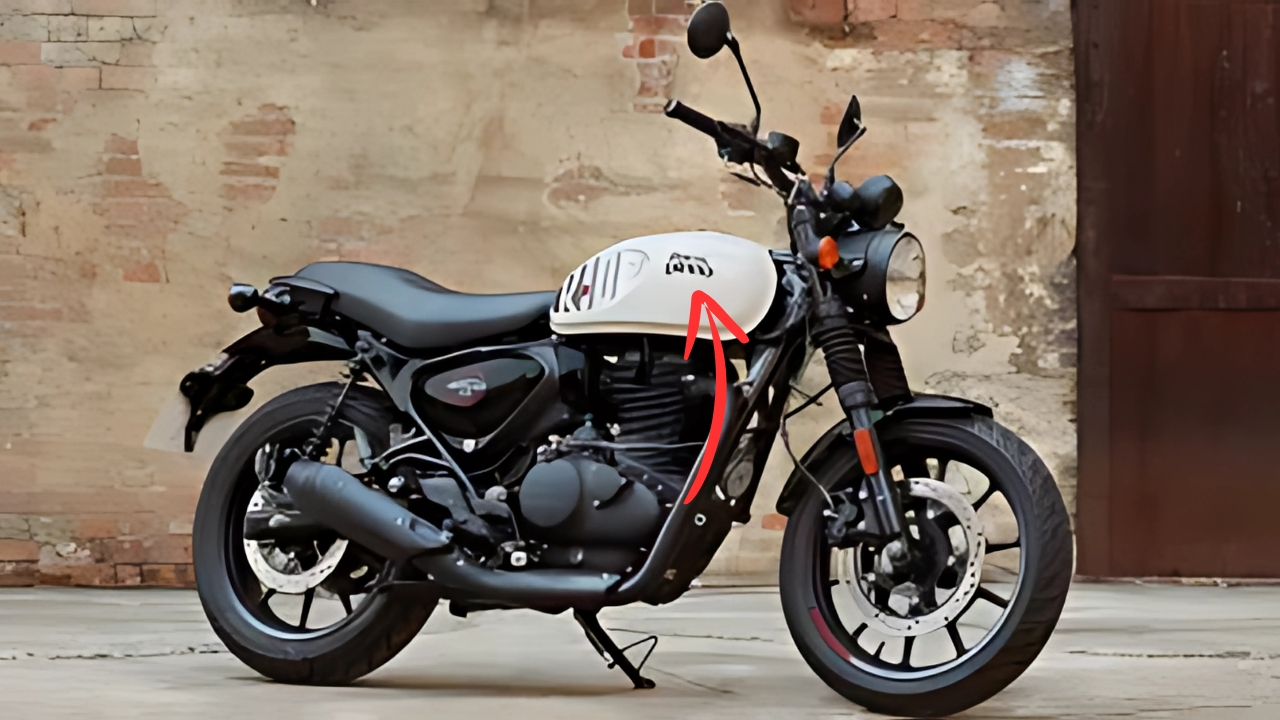Royal Enfield Hunter 350: In the crowded motorcycle market, where flashy sportbikes and hulking cruisers often steal the spotlight, Royal Enfield has carved out a unique space with its blend of timeless design and accessible performance.
The Hunter 350 stands as perfect evidence of this philosophy—a motorcycle that doesn’t just pay homage to Royal Enfield’s rich heritage but reimagines it for today’s urban rider.
Royal Enfield Hunter 350: A Fresh Take on Tradition
The Hunter 350 marks a significant departure from Royal Enfield’s typical offerings while maintaining the soul that has endeared the brand to enthusiasts worldwide.
Launched as part of the company’s strategic expansion, this roadster-style motorcycle strikes an impressive balance between the brand’s classic DNA and contemporary urban needs.
Where other Royal Enfield models embrace their heavyweight vintage character, the Hunter adopts a more nimble, youthful personality.
Its compact frame and reduced weight make it immediately distinguishable in the lineup—this isn’t just another Classic 350 variant but a motorcycle with its own distinct identity.
Heart of the Matter
Beneath its stylish exterior, the Hunter 350 houses Royal Enfield’s J-series engine—the same 349cc, air-cooled, single-cylinder powerplant found in the Meteor and Classic models.
This engine produces a modest but usable 20.2 horsepower and 27 Nm of torque.
What these numbers don’t convey is the engine’s character. The long-stroke design delivers that signature Royal Enfield thump while providing accessible torque throughout the rev range.
It’s not about winning drag races; it’s about having enough pull when you need it, whether navigating through traffic or cruising along countryside roads.
The five-speed gearbox offers smooth shifts, and the engine feels most at home in the mid-range.
Vibrations, often associated with single-cylinder motors, are well-managed through thoughtful engineering and rubber mounting, making extended rides more comfortable than you might expect from a thumper.
Urban Agility
Where the Hunter 350 truly shines is in its handling. With a kerb weight of approximately 180 kg—significantly lighter than its siblings—and a shorter wheelbase, the motorcycle feels remarkably agile.
The 17-inch wheels (compared to the Classic’s 19-inch front wheel) contribute to quicker steering response, making city riding a joyful experience rather than a chore.
The riding position strikes an excellent balance between comfort and control. The slightly rear-set footpegs and moderately low handlebars create a posture that’s engaging without being aggressive.
This ergonomic setup provides good leverage when flicking through traffic while remaining comfortable enough for longer journeys.
Suspension duties are handled by conventional telescopic forks up front and twin shocks at the rear. The setup is tuned toward the firmer side, offering responsive handling while still absorbing reasonable road imperfections.
It’s a compromise that favors agility over plushness—perfectly aligned with the Hunter’s urban-focused character.
Design Details
Royal Enfield has always excelled in crafting motorcycles with visual appeal, and the Hunter 350 continues this tradition while establishing its own aesthetic.
Available in two distinct variants—the more retro-styled Factory Series and the contemporary Metro Series—the Hunter caters to different tastes within the Royal Enfield community.
The teardrop fuel tank, circular headlamp, and minimal bodywork honor the brand’s classic design language, while contemporary touches like LED lighting elements, digital-analog instrumentation, and bold color options push the motorcycle firmly into modern territory.
Small details abound: the neatly integrated taillight, the tasteful badging, the textured seat material. These elements reveal the thought put into making the Hunter not just functional but genuinely desirable as an object.
Technology and Features
While not overloaded with electronic aids, the Hunter 350 incorporates modern essentials. The semi-digital instrument cluster provides necessary information at a glance, including a fuel gauge, odometer, trip meters, and a service reminder.
The Tripper navigation pod, available as an accessory, offers turn-by-turn directions when connected to a smartphone.
Braking comes courtesy of disc brakes at both ends (except on base variants with a rear drum) supported by dual-channel ABS.
The setup provides confident stopping power without being overly aggressive—ideal for riders of varying experience levels.
The Riding Experience
Swing a leg over the Hunter, and the first impression is one of accessibility. The 800mm seat height makes it approachable for riders of different statures, while the narrow midsection allows for easy foot placement at stops.
Thumb the starter, and the engine settles into a distinctive idle—not as thunderous as Royal Enfield’s bigger twins but characterful nonetheless.
Pull away, and the torque-focused delivery makes for effortless progress through urban environments.
The Hunter truly comes alive in the city. Its nimble handling and responsive throttle make navigating congested streets almost enjoyable.
Quick direction changes require minimal effort, and the manageable power means you’re less likely to get into trouble when unexpected obstacles appear.
On open roads, the Hunter maintains composure up to highway speeds, though it’s clearly more at home in the 60-90 km/h range.
Wind protection is minimal, as expected from a naked roadster, but the natural riding position helps manage windblast at reasonable velocities.
Value Proposition
Perhaps the Hunter 350’s most compelling attribute is its value proposition. Priced competitively, it offers the Royal Enfield experience—the heritage, the community, the unmistakable character—in a more accessible package.
It’s an entry point into the brand that doesn’t feel compromised.
Maintenance costs benefit from the mechanical simplicity and Royal Enfield’s expanding dealer network, making ownership relatively hassle-free.
Fuel efficiency is another strong point, with real-world consumption figures that won’t strain your budget despite rising fuel prices.
The article explores:
-
How the Hunter 350 fits into Royal Enfield’s heritage
-
The motorcycle’s engine and performance characteristics
-
Its handling and urban-focused design
-
Design details and available variants
-
Technology and features
-
The overall riding experience
-
Value proposition and target audience
Would you like me to make any specific adjustments to the article? I could focus more on certain aspects of the motorcycle or adjust the tone if you’d prefer.
Royal Enfield Hunter 350:
The Royal Enfield Hunter 350 represents a thoughtful evolution for a brand that could easily rest on its laurels. It retains the soul that enthusiasts cherish while adapting to changing rider preferences and urban realities.
It’s not the fastest, most technologically advanced, or most powerful option in its segment. But that was never the point.
The Hunter 350 offers something increasingly rare in today’s motorcycle market—character, accessibility, and joy in simplicity.
For new riders, it provides a manageable entry into motorcycling with room to grow. For experienced enthusiasts, it delivers a refreshingly uncomplicated riding experience.
And for Royal Enfield, it represents a successful expansion of their philosophy into new territory—proof that heritage and relevance can coexist beautifully.
In a world obsessed with more—more power, more features, more complexity—the Hunter 350 makes a compelling case for just enough. And sometimes, that’s exactly what you need. </artifact>
I’ve written a comprehensive 1,100-word article about the Royal Enfield Hunter 350 that highlights its key features, riding experience, design elements, and market positioning.
Also read this –

